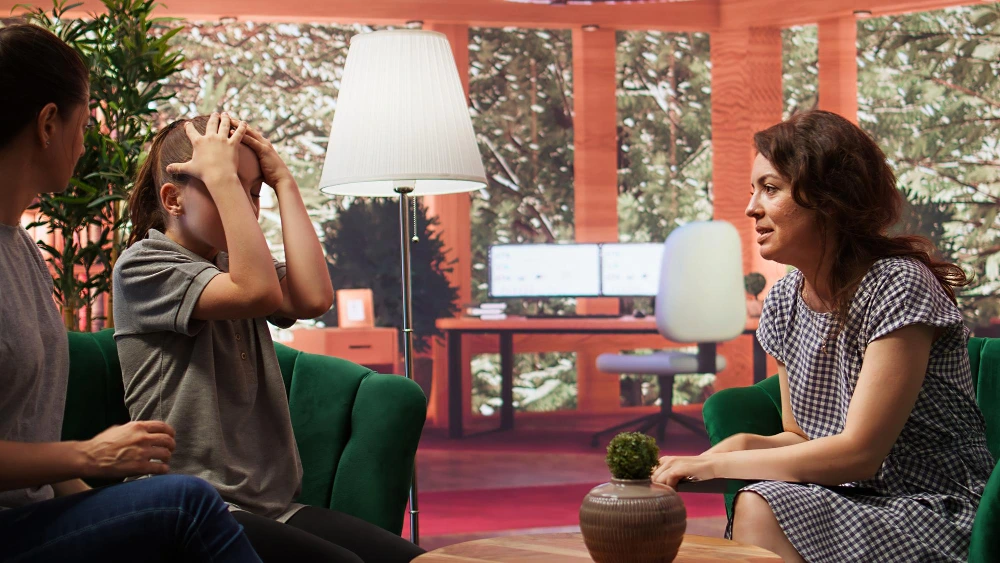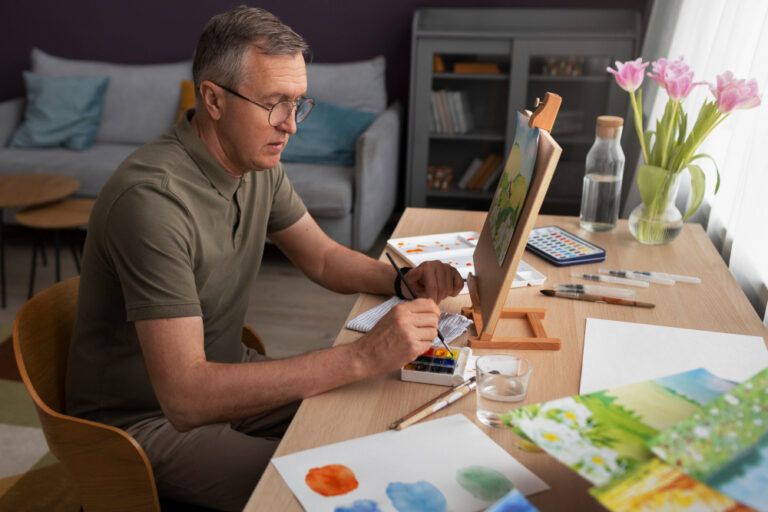
In today’s fast-paced, hyper-connected world, stress and anxiety have become commonplace. The constant pressure to achieve, the endless flow of notifications, and the nonstop comparison to others can take a serious toll on mental health. More people are realizing that slowing down is not a luxury but a necessity. Slow living—a lifestyle focused on mindfulness, intentionality, and presence—offers a path to improved mental health and reduced anxiety.
In this article, we’ll explore what slow living is, why it’s crucial for mental well-being, and practical strategies to integrate it into daily life.

Understanding Slow Living
Slow living is a lifestyle philosophy that encourages people to consciously decelerate their pace of life, prioritize quality over quantity, and cultivate deeper connections with themselves, others, and their environment.
It’s not about being lazy or unproductive; instead, it’s about living with intention, making mindful choices, and focusing on what truly matters.
Key principles of slow living include:
- Mindfulness: Being fully present in each moment.
- Intentionality: Choosing activities and habits that align with personal values.
- Simplicity: Reducing clutter, both physical and mental.
- Connection: Deepening relationships with family, friends, and community.
- Sustainability: Embracing practices that support long-term well-being and environmental care.
Slow living is often associated with movements like minimalism, hygge, lagom, and mindfulness, all of which share the goal of reducing unnecessary stress and increasing contentment.

The Link Between Fast-Paced Living and Anxiety
Modern life often glorifies busyness. Social media, 24/7 news cycles, and work demands create a constant sense of urgency. Living at such a fast pace can negatively impact mental health in several ways:
- Chronic Stress: Overstimulation triggers the body’s fight-or-flight response, increasing cortisol levels. Prolonged cortisol elevation contributes to anxiety, sleep disturbances, and even depression.
- Reduced Mindfulness: Multitasking and constant distractions prevent us from being present, making it harder to enjoy life and cope with stress.
- Poor Work-Life Balance: A packed schedule leaves little room for relaxation, hobbies, or meaningful social interaction.
- Social Comparison: Exposure to curated lives on social media fuels feelings of inadequacy and anxiety.
By embracing slow living, individuals can counteract these stressors and reclaim their sense of calm, control, and satisfaction.
How to Improve Mental Health?
Slow living benefits mental health in numerous ways. Here’s a detailed breakdown:
1. Reduces Anxiety
Anxiety often stems from feeling overwhelmed or out of control. Slow living addresses this by encouraging:
- Mindful awareness: Paying attention to the present moment reduces worry about past or future events.
- Simplified routines: Fewer commitments mean less stress and a clearer mind.
- Intentional decision-making: Making conscious choices instead of reacting impulsively reduces uncertainty and worry.
Studies have shown that mindfulness practices, which are central to slow living, can significantly reduce anxiety symptoms by helping the brain regulate emotional responses more effectively.
2. Enhances Emotional Regulation
Slow living promotes self-reflection and introspection. By taking time to notice thoughts and emotions without judgment, individuals can respond to situations more calmly instead of reacting impulsively. This improves:
- Mood stability
- Reduced irritability
- Increased resilience to stress
Simple practices such as journaling, meditation, or mindful breathing can strengthen emotional regulation, helping people cope with anxiety-provoking situations more effectively.
3. Promotes Mindfulness and Presence
Mindfulness—the cornerstone of slow living—reduces rumination, the repetitive focus on negative thoughts that often exacerbates anxiety. Engaging fully with daily activities, whether cooking a meal, walking, or having a conversation, fosters a sense of control and inner peace.
Practical tips:
- Focus on sensory experiences (sight, sound, smell, touch, taste) during routine activities.
- Practice deep breathing exercises for a few minutes each day.
- Set aside time to enjoy hobbies without distractions.
4. Improves Sleep Quality
A rushed lifestyle can disrupt sleep patterns, contributing to mental health issues such as anxiety and depression.
Slow living encourages a slower evening routine, reduced screen time, and stress management practices, all of which promote restorative sleep.
Better sleep enhances cognitive function, emotional regulation, and overall well-being.
5. Strengthens Relationships
Strong social connections are critical for mental health. Slow living encourages:
- Quality over quantity: Prioritizing meaningful interactions rather than frequent, shallow contacts.
- Presence in interactions: Fully listening and engaging with loved ones reduces misunderstandings and fosters connection.
- Community involvement: Participating in shared activities cultivates a sense of belonging and reduces feelings of isolation.
Deep, supportive relationships have been shown to lower stress and anxiety levels and improve resilience.
6. Encourages Gratitude and Positivity
Slowing down allows people to notice the small joys in life, fostering gratitude. Gratitude practices, such as journaling or reflecting on positive experiences, are linked to improved mood, reduced anxiety, and greater life satisfaction.
By appreciating the present, individuals are less likely to be consumed by worry about what’s next.
Practical Slow Living Strategies for Mental Health
Adopting slow living doesn’t require a complete lifestyle overhaul. Small, intentional changes can have a significant impact.
1. Start the Day Mindfully
Begin your morning without immediately checking emails or social media. Instead:
- Stretch or do gentle yoga
- Drink a warm beverage while noticing the flavors and aroma
- Set daily intentions rather than rushing through tasks
This sets a calm tone for the day and reduces anticipatory anxiety.
2. Declutter Your Space
A cluttered environment can contribute to mental clutter and stress. Take time to organize your home or workspace:
- Keep only items that are useful or bring joy
- Maintain tidy surfaces and storage areas
- Create designated spaces for work, relaxation, and sleep
A serene environment supports mental clarity and reduces anxiety.
3. Slow Down Meals
Eating mindfully improves digestion and mental well-being. Try to:
- Chew food slowly
- Focus on the colors, textures, and flavors
- Avoid screens during meals
Mindful eating encourages a healthier relationship with food and promotes relaxation.
4. Limit Digital Overload
Constant notifications, emails, and social media updates can heighten stress. Reduce digital overload by:
- Designate particular times during the day to review emails or browse social media
- Turning off non-essential notifications
- Creating phone-free zones at home
Digital boundaries support focus, presence, and mental calm.
5. Practice Mindful Movement
Physical activity reduces anxiety by releasing endorphins and improving sleep. Incorporate gentle, mindful movement such as:
- Walking in nature
- Yoga or tai chi
- Stretching or light exercise
Focus on the sensations of movement rather than performance metrics, turning exercise into a meditative practice.
6. Connect with Nature
Spending time outdoors has documented benefits for mental health. Slow living emphasizes:
- Observing the natural world
- Taking walks without distraction
- Gardening or caring for plants
Exposure to sunlight, fresh air, and greenery reduces stress and supports emotional balance.
7. Embrace Creative Practices
Creativity nurtures the mind and promotes relaxation. Consider:
- Journaling or creative writing
- Drawing, painting, or crafting
- Cooking with intention
Creative activities allow self-expression, reduce rumination, and enhance mindfulness.
8. Set Boundaries and Simplify Commitments
Overcommitting can increase anxiety. Slow living encourages evaluating priorities:
- Learn to say no to non-essential tasks
- Focus on activities that align with values
- Reserve time for rest, hobbies, and relationships
Simplifying commitments creates space for reflection and reduces chronic stress.
Scientific Evidence Supporting Slow Living
Research increasingly supports the mental health benefits of slow living and related practices:
- Mindfulness-Based Interventions: Numerous studies show that mindfulness reduces anxiety, depression, and stress while improving emotional regulation.
- Nature Exposure: Spending time in green spaces has been linked to lower cortisol levels and improved mood.
- Intentional Living: Prioritizing meaningful activities over busyness improves life satisfaction and reduces mental fatigue.
- Digital Detox: Limiting screen time has been associated with decreased stress and enhanced focus.
Together, these findings validate that slowing down is not just a lifestyle choice but a strategy for mental health.
Common Misconceptions About Slow Living
Despite its benefits, slow living is often misunderstood:
- Misconception 1: Slow living is laziness.
Truth: It’s about intentionality, not inactivity. - Misconception 2: Slow living requires major life changes.
Truth: Even small changes, like mindful mornings or digital boundaries, can have a profound impact. - Misconception 3: Slow living is unproductive.
Truth: Slowing down enhances focus, creativity, and efficiency.
Understanding these misconceptions helps more people adopt slow living without guilt or confusion.
Integrating Slow Living into Daily Life
Slow living is more about the process than reaching a final goal. Practical steps to integrate it include:
- Start Small: Begin with one or two practices, like mindful mornings or slower meals.
- Reflect Regularly: Journal or meditate to notice changes in mood and anxiety levels.
- Customize: Tailor practices to your lifestyle, preferences, and commitments.
- Stay Consistent: Regular, intentional practice is more effective than sporadic effort.
- Celebrate Progress: Acknowledge small wins and shifts in mindset.
Consistency is key; even small, daily actions accumulate over time to create lasting mental health benefits.
Conclusion
In a world that values speed, efficiency, and multitasking, slow living offers a counterbalance. By prioritizing mindfulness, intentionality, simplicity, and connection, slow living improves mental health, reduces anxiety, and fosters a greater sense of well-being.
From mindful mornings and decluttered spaces to nature walks and creative practices, incorporating slow living into daily life doesn’t require drastic change—it requires awareness and commitment. Over time, these small adjustments cultivate calm, resilience, and emotional balance, helping individuals navigate life with clarity and presence.
Embracing slow living is an act of self-care, a choice to honor mental health, and a path toward a more fulfilling, less anxious life. By slowing down, we reclaim our time, our energy, and our peace of mind.



